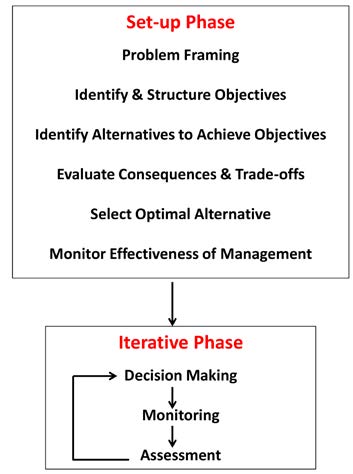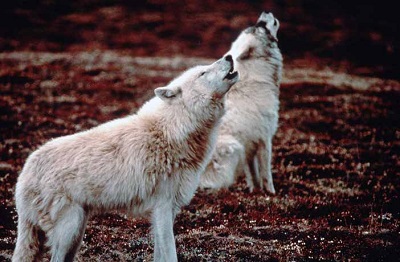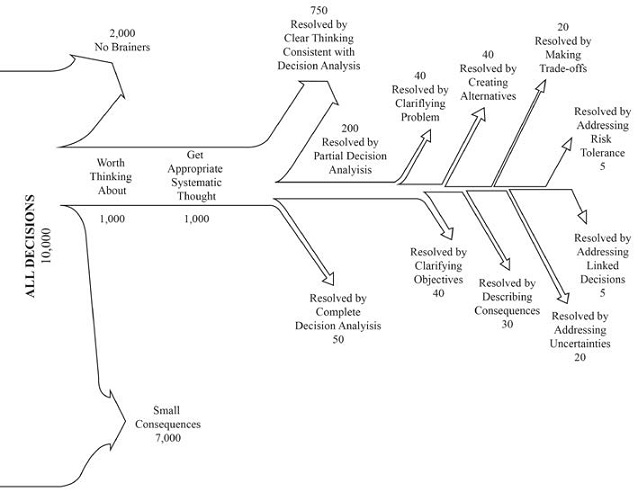
Photo by Carl Johnson, Artist in Residence, Gates of the Arctic National Park and Preserve.
Introduction
A fundamental goal of the National Park Service (NPS) is the long-term protection and management of resources in the National Park System. Reaching this goal requires multiple approaches, including the conservation of essential habitats and the identification and elimination of potential threats to biota and habitats. To accomplish these goals, the NPS has implemented the Alaska Region Vital Signs Inventory and Monitoring (I&M) Program to monitor key biological, chemical, and physical components of ecosystems at more than 270 national parks. The Alaska Region has four networks—Arctic, Central, Southeast, and Southwest. By monitoring vital signs over large spatial and temporal scales, park managers are provided with information on the status and trajectory of park resources as well as a greater understanding and insight into the ecosystem dynamics. While detecting and quantifying change is important to conservation efforts, to be useful for formulating remedial actions, monitoring data must explicitly relate to management objectives and be collected in such a manner as to resolve key uncertainties about the dynamics of the system (Nichols and Williams 2006). Formal decision making frameworks (versus more traditional processes described below) allow for the explicit integration of monitoring data into decision making processes to improve the understanding of system dynamics, thereby improving future decisions (Williams 2011).
There are a variety of processes by which park managers make natural resource decisions but perhaps the most common is a heuristic approach. In this case the decision maker uses professional experience, input from trusted advisors, and possibly consults reports or other literature to arrive at a decision. The decision is essentially made in a black box (the decision maker’s head) making transparency and repeatability challenging. This can be especially problematic for complex decision problems, such as those involving multiple use resources, those that may lead to litigation, and those that are iterative.
For managers of national parks, this situation becomes more complex in light of the essential mandate of the agency, which compels managers to consider future generations in daily operations and management of resources. This necessitates that managers consider how today’s decisions influence tomorrow’s resources and, in turn, the decisions that will be available to managers in the future. In addition, the management policies of the NPS state that management decisions will incorporate best available science into decisions (National Park Service Management Policies 2006). Formalized decision frameworks accomplish both.

Illustration from Williams 2011.
Elements of a formalized decision process include (1) defining the decision problem, (2) identifying and structuring objectives, (3) developing a set of management alternatives, (4) evaluating the consequences of alternatives relative to objectives (usually via modeling), and (5) selecting the best decision action (Clemen and Reilly 2001; Conroy and Peterson 2013; Figure 2). This five-step decision making process is a useful framework for evaluating a very broad range of decision problems, ranging from the very simple to the very complex (Keeney 2004).
Adaptive management includes all of the components listed above, but is applied to sequential (in time or space) decision problems (Williams 2011). In adaptive management frameworks, uncertainties about how the system works are explicitly represented as competing models representing alternative hypotheses. Monitoring programs are designed to discern the alternative hypotheses that produce better predictions and to evaluate the success of management schemes (Nichols and Williams 2006). Future decisions can then be adapted based on the improved understanding of how the system works.
With the creation of the I&M program, long-term data sets have become increasingly available for managers to incorporate into decisions. Over the last five years, the Alaska Region I&M program has worked with parks to address complex management issues by using formalized decision processes that are transparent and repeatable and that formally link monitoring programs to management decision making. To highlight the benefits of using a formalized (versus traditional) decision process, we present examples of how components of formalized decision processes aided NPS decision making involving sea otter, brown bear, golden eagle, and wolf management below.

Photo by Dr. David L. Mech
Problem Framing
While at first glance defining a problem may sound simple, the act of articulating a problem statement can lead to insights about an issue that may help to reframe them in a more productive light. For example, as the Alaska Department of Fish and Game (ADFG) prepared to conduct lethal wolf control in 2009, concern was expressed by Yukon-Charley Rivers National Preserve over the potential effect of control on wolves that use the preserve. The initial goal stated by ADFG was to reduce the fall population size of wolves in the control area by 80 percent. However, during a problem-framing exercise, preserve managers realized that framing their management problem in terms of wolf density was problematic. The exercise helped them to discern that a more appropriate way of framing their problem was to consider maintaining a functioning predator/prey system. For example, the preserve could have a high or a low density of wolves and not have an ecologically functioning predator/prey system (which is required per the Alaska National Interest Lands Conservation Act, or ANILCA). In this case, the first step of a formalized decision process, problem framing, allowed preserve management to realize that initially, they had incorrectly framed the management problem.
Identifying objectives
Once a problem has been clearly defined, a decision maker’s next task is to identify and structure the objectives of their management problem. Structuring objectives involves the identification and separation of fundamental and means objectives (Clemen and Reilly 2001; Conroy and Peterson 2013). Fundamental objectives are those that relate to the decision-maker’s core values and thus are not usually negotiable. In contrast, means objectives are actions that need to be accomplished in order to achieve the fundamental objectives. It is also important to identify measurable attributes, which are or can be monitored, to assess the effectiveness of management actions post-implementation.
Thus, identification of management objectives will not only identify an appropriate metric for management effectiveness, but also provide insights into the relative values that decision makers have tied to their objectives (in multiple objective problems) and, in turn, the trade-offs that must be considered to find an optimal solution to the problem. For example, as part of a formalized decision process for management of brown bear (Ursus arctos horribilis), NPS managers developed the following series of fundamental objectives for Katmai National Park and Preserve, and Noatak National Preserve: (1) optimize the structure and function of brown bear populations using NPS lands, (2) optimize sport and federally-qualified subsistence harvest, (3) minimize human-bear incidents, and (4) optimize non-consumptive use opportunities. These objectives recognized that (1) brown bear populations naturally fluctuate, (2) park resources (including brown bear) are to be managed for public enjoyment and this may include consumptive (subsistence and sport harvest) and non-consumptive uses, but not to the point of impairment (National Park Service Management Policy 2006), (3) deference to non-conflicting state harvest regulations (ANILCA 1980), and (4) realization that brown bear populations extend beyond park boundaries. In multiple objective problems, balancing competing objectives such as minimizing human-bear incidents and optimizing consumptive and non-consumptive use opportunities, can be problematic if attempted via a traditional (heuristic) decision process. Alternately, the formalized decision process used by this team provided a means by which managers could evaluate and balance trade-offs of (seemingly) competing objectives. Moreover, the formalized decision framework provided a means by which managers could be explicit and transparent about how objectives were valued relative to one another, and, in turn, how objective ranking ultimately influenced decision optimization.

Photo by Ben Weitzman, USGS.
Evaluating Consequences with Models
Once the scope of a decision problem has been defined (i.e., decision statement, objectives, and management alternatives), alternate actions can be evaluated by predicting resource outcomes with respect to the objectives for each option. In the case of sea otters, which have experienced drastic declines in southwest Alaska, abundant empiricaldata (published reports) and NPS monitoring data was available to construct a relatively strong quantitative model that represented the most current understanding of sea otter system dynamics. Combining existing data into a single framework that can easily be updated as new data is collected helped NPS identify important uncertainties that can be used to focus inventory and monitoring efforts so that data can be collected in such a way as to resolve those uncertainties that are important to decision-making.

NPS photo/ Dr. Carol McIntyre-Hander
Adaptive Management for Recursive Decisions
For the past 20 years golden eagles have been monitored in Denali National Park and Preserve. In 2004, golden eagles were incorporated into the Central Alaska Network I&M Program because they are a top avian predator and as such, provide insight into functioning of park ecosystems (MacCluskie et al 2004). Monitoring data showed that from 1988 to 2010 there was a 25 percent decline in the probability of a female laying eggs and the average number of fledglings produced from a territory. Thus, there was interest in reducing disturbance to nesting pairs. To this end, the park needed to be able to determine if trail access near eyries (bird of prey nests) should be restricted at critical times. Given that trail closure decisions would impact park visitors, it was important that park managers had an explicit and defensible process for making decisions regarding trail closures. A formalized decision framework was constructed to help park managers determine when trail closures were needed to minimize disturbance to golden eagles nesting in the park. This decision tool not only provides a transparent and defensible mechanism by which park managers can make decisions using the best available science, it also allows for adaptation of decisions to fluctuating system dynamics (i.e. adaptive management). Moreover, the implementation of selected, optimal actions combined with ongoing monitoring of measurable objectives will allow for active learning and improved decision making over time (Williams 2011).

Summary and Conclusions
Over the past seven years, data from long-term monitoring has been used to assist with park management in Alaska by explicitly incorporating objectives, science, and decision making into integrated decision frameworks. Often at the beginning of these processes there has been trepidation on the part of managers that the process will be too onerous or complicated. We have several points to make in response to this assertion. First, formalized decision processes do not need to be arduous or complex. By quickly working through each step, a process called rapid prototyping, a manager can often gain great insight into a decision problem with very little investment. Second, we encourage managers to avoid the common misconception that decision processes are purely quantitative exercises. A majority of problems can be resolved, and many can benefit, from walking through the early design and development phases of formalized decision processes including problem framing, identifying objectives, and considering means of achieving those objectives (Keeney 2004; Figure 5). We contend that we have presented a number of examples of formalized decision processes that are improving park management decision making, and we encourage continued applications of this approach. Moreover, considering that the NPS is legally mandated to incorporate perpetuity into its decisions, we believe that adopting adaptive management as a means for making decisions (when they are iterative in nature) is especially appropriate.
Acknowledgments
Special thanks to the biologists and managers that contributed to the decision-making process for wolves, brown bears, sea otters, and golden eagles in Alaska parks over the last seven years. Thanks also to Michael Conroy, Jim Nichols, and Julien Martin for contributing their expertise to natural resource decision making in Alaska parks.
REFERENCES
Clemen, R., and T. Reilly. 2001.
Making Hard Decisions. Mason, OH: South-Western.
Conroy, M., and J. Peterson. 2013.
Decision-making in Natural Resource Management: A Structured Adaptive Approach. Hoboken, NJ:
Wiley-Blackwell.
Keeney, R. 2004.
Making better decisions. Decision Analysis. 1(4):193-204.
MacCluskie, M., K. Oakley, and D. Wilder. 2004.
Central Alaska Network Vital Signs Monitoring Plan. Fort Collins, CO: National Park Service.
Nichols, J., and B. Williams. 2006.
Monitoring for conservation. Trends in Ecology and Evolution 21:668-673.
Williams, B. 2011.
Adaptive management of natural resources—framework and issues. Journal of Environmental Management 92:1346-1353.
Williams B., R. Szaro, and C. Shapiro. 2009.
Adaptive management: The U.S. Department of the Interior technical guide. Washington, D.C.: U.S. Department of the Interior, Adaptive Management Working Group.
U.S. Congress. 1916.
National Park Service Organic Act 16 USC 1-4.
U.S. Congress. 1980.
Alaska National Interest Lands Conservation Act (ANILCA). Public Law 96-487. Section 201.
U.S. Department of the Interior. 2006.
National Park Service Management Policies 2006.
Part of a series of articles titled Alaska Park Science - Volume 14 Issue 1: Resource Management in a Changing World.
Last updated: April 13, 2016
